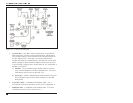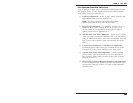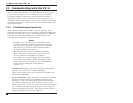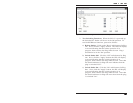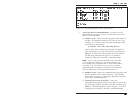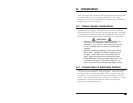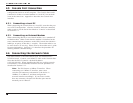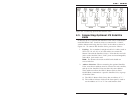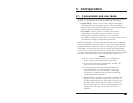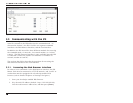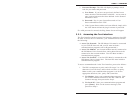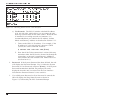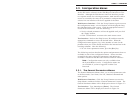
4.3. Console Port Connection
The Console Port is a male, RS232C DB9 connector, wired in a DTE
configuration similar to an AT computer. The Console Port can be
connected to either an external modem or a local PC, but not both
items at the same time. Appendix A describes the Console Port
interface.
4.3.1. Connecting a Local PC
When connecting the Console Port to a Local PC, note that the port
uses a DTE configuration. After the Local PC has been connected,
make certain to set the Serial Port Mode to "Console" as described
in Section 5.3.1.
4.3.2. Connecting an External Modem
When connecting directly to an external modem, use a standard AT
to Modem cable. Make certain that the modem is initialized at the
same communications parameters as the IPS Console Port (default =
9600 bps, no parity, 8 data bits, 1 stop bit.) The modem must be set
to Auto-Answer, in one ring. Please refer to the modem user’s guide
for more information. Sections 5.3.1 describes the procedure for
defining modem command strings.
4.4. Connecting the Network Cable
The Network Port is an RJ45 Ethernet jack, for connection to a
TCP/IP network. Connect your 10Base-T cable to the Network Port.
Note that the IPS-15 features a default IP address
(192.168.168.168). When installing the IPS in a working network
environment, it is recommended to define network parameters as
described in Section 5.3.3.
Note: The IPS features a 10Base-T Interface. When
connecting to a 100Base-T interface, most router
switches will autosense to determine if the device is
100Base-T or 10Base-T, and then configure the
network interface accordingly. If your router switch
does not autosense, the network interface port must be
manually set to 10Base-T.



